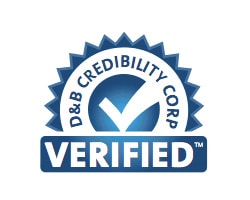You can’t build trust if your message keeps changing.
Execs can’t afford to stay behind the scenes anymore.
In high-stakes B2B environments, your brand promise is only as strong as your ability to repeat it clearly, consistently, and across every touchpoint. When that doesn’t happen, your buyers don’t just disengage.
They walk away entirely.
Inconsistent messaging confuses internal teams, stalls sales conversations, and weakens the credibility of even the most sophisticated brands.
This is a top-down issue, and it’s costing companies growth.
The Real Cost of Misalignment
When buyers encounter inconsistent messaging across marketing, sales, and customer support, it creates friction and confusion, eroding trust before a deal is ever made.
According to a Gartner survey of more than 250 B2B customers, 77% described their purchase experience as extremely complex or difficult.
With buying committees often involving 6 to 10 stakeholders, a single misstep in your message can delay decisions, stall pipeline momentum, or even lose the sale entirely.
This inconsistency can stem from:
- Outdated positioning that never reached the sales team
- Siloed departments creating content in isolation
- Rapid growth without centralized brand documentation
- External partners interpreting the brand differently
And in a market where 95% of B2B buyers aren’t ready to buy at any given time, trust and consistency are non-negotiable.
Related ➤ See How Our Message Positioning Services Solve This
Why the Fix Starts at the Top
It’s not enough to say “we need better messaging.” Strategic alignment starts with executive ownership.
When CEOs and CMOs work together to champion clarity and consistency, they send a powerful signal internally and externally. They set the tone for:
- How the brand is positioned in the market
- What value propositions are repeated
- Where messaging gets reinforced in the funnel
- How feedback loops between teams stay tight
This kind of executive attention ensures marketing teams are producing quality content, reinforcing a strategic message that actually moves your buyers to action.
Related ➤ How to Make Your B2B Message Stick
Brand Inconsistency Is a Revenue Issue
Many B2B organizations lack a clear view of their revenue opportunities… and their messaging reflects it.
Demand efforts still often focus on individual leads, despite the fact that more than 80% of B2B purchases involve three or more decision-makers.
Without alignment around group dynamics and shared value propositions, brand messaging gets watered down across departments, campaigns, and channels.
That disconnect creates confusion internally and friction externally, leaving buyers unsure of what a brand actually stands for or why it’s the right choice. This underscores the reality that consistency is like fuel for your organization.
When your message is consistent, your teams stop reinventing the wheel. Your buyers start seeing you as a solution, not a risk. And your sales cycle accelerates because everyone knows what you stand for and why it matters.
Don’t Get It? You’re Not Alone.
Many executives know their message isn’t landing but don’t know why. If leadership isn’t aligned, your teams won’t be either, and your message will suffer.
Millennium’s eBook, If Customers Don’t Get It, They Won’t Buy It, dives into why B2B brands lose clarity, connection, and conversion when executives aren’t fully aligned on strategy.
Get the eBook today. Discover the silent forces sabotaging your messaging and what to do about it.
What CEOs and CMOs Should Do Right Now
Here’s where to focus:
1. Audit Your Message Across Touchpoints
Look at your website, sales decks, ads, emails, and support channels. Are they telling the same story? Are your differentiators clearly defined and repeated?
📌 Why Branding is Critical for Scaling Your Business
2. Rally Your Leadership Team
Consistency is everyone’s job, but the strategy ultimately starts with you. Ensure department heads understand the core message and how to apply it.
3. Embed Messaging Into Onboarding and Tools
New hires shouldn’t guess what the company stands for. Give them the playbook and reinforce it across templates, communication channels, and enablement tools.
📌 See How We Build Those Systems
Final Word: Own the Message or Lose the Market
Messaging misalignment doesn’t fix itself. It takes leadership to step in, simplify the story, and systematize its delivery.
Whether you’re aiming to boost lead quality, tighten marketing ROI, or unify siloed teams, start with one question: Does everyone know how to tell our story?
If not, it’s time to take charge.


























